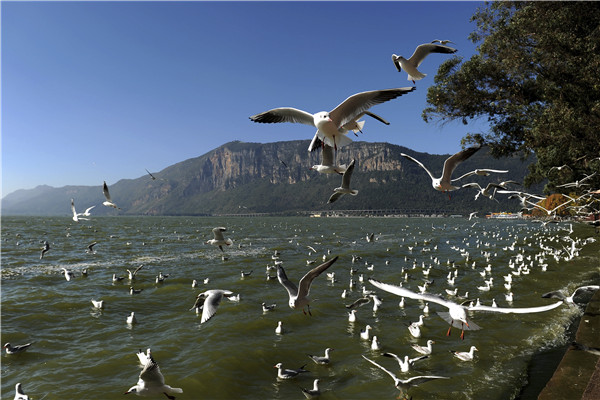Dianchi Lake shows blue is the new green
 |
|
Migrating gulls in great numbers stay for about five months at Dianchi Lake. [Photo provided to China Daily] |
Seagull swarms. Fantastic flowers. Wondrous wetlands.
Indeed, the life and scenery supported by Kunming's once ecologically devastated Dianchi Lake shows the potential of revitalizing spoiled aquatic systems.
And much of that potential hails from tourism.
Dianchi-Yunnan province's largest water body-ripples across about 330 square kilometers as a vast ecological parable of caution and redemption.
It was pristine in the 1970s and superlatively toxic by the '80s, as industrialization thundered nationwide.
Pollution declined but persisted until 2009, when the government removed illegal houses and fishponds.
It then opened the area for travelers.
Authorities similarly resuscitated the wetlands that soak its banks, which are spectacles in themselves.
Yongchang wetland's visitors can stroll and cycle along pathways and boardwalks that crisscross the web-work of bogs and streams.
Wooden boats bob in the narrow Chuanfang River, since fishing on Dianchi Lake is allowed only 37 days a year.
Ten workers hoist four tons of seaweed from the river-a day-to prevent organic pollution. The plant matter is used in organic fertilizers.
Myriad shades of greenery along the banks are dappled with flowers of every hue. Elderly residents perform folk songs on traditional instruments.
The wetland hosts over 280 animal species, including 23 types of fish, and 290 plant varieties.














